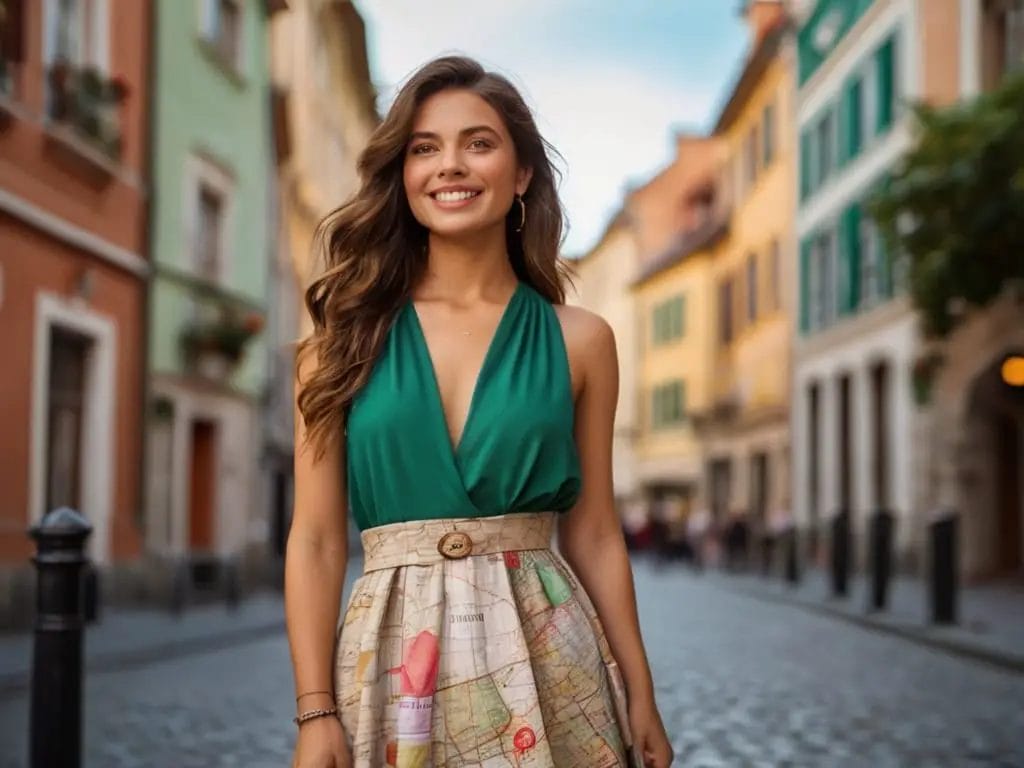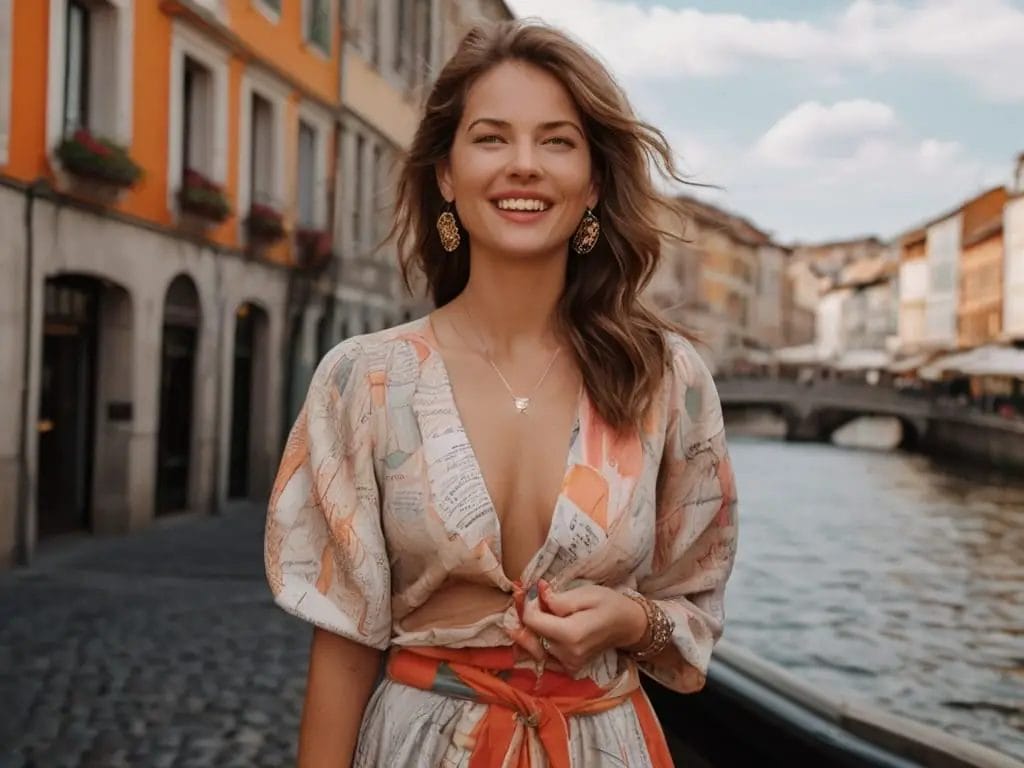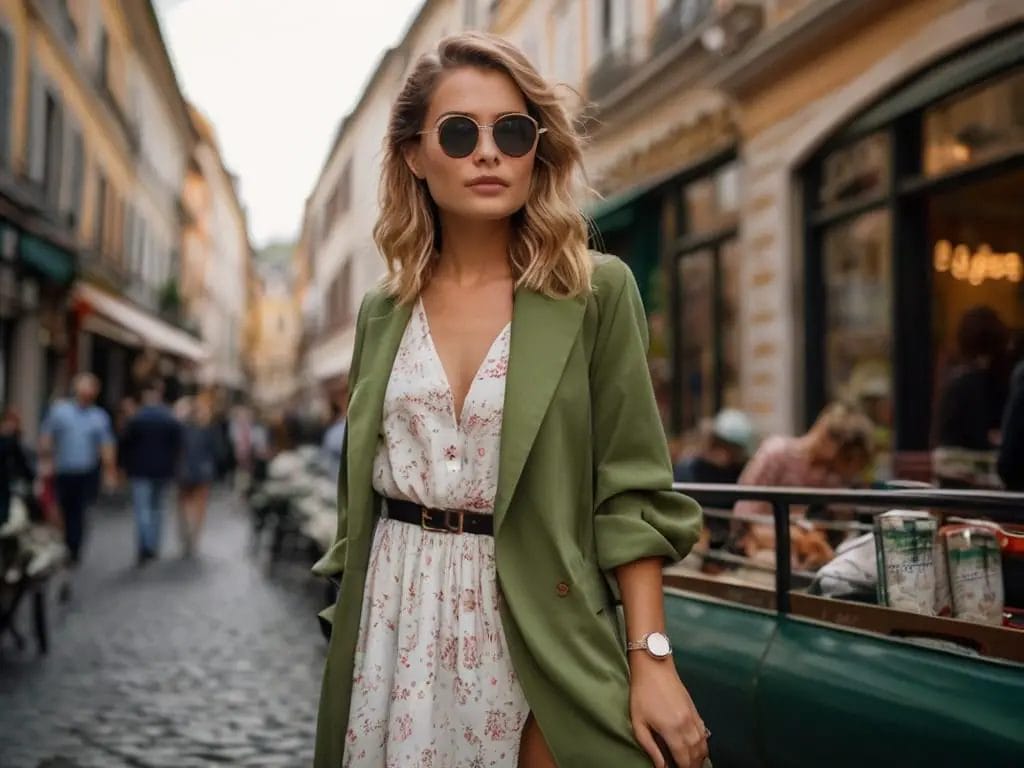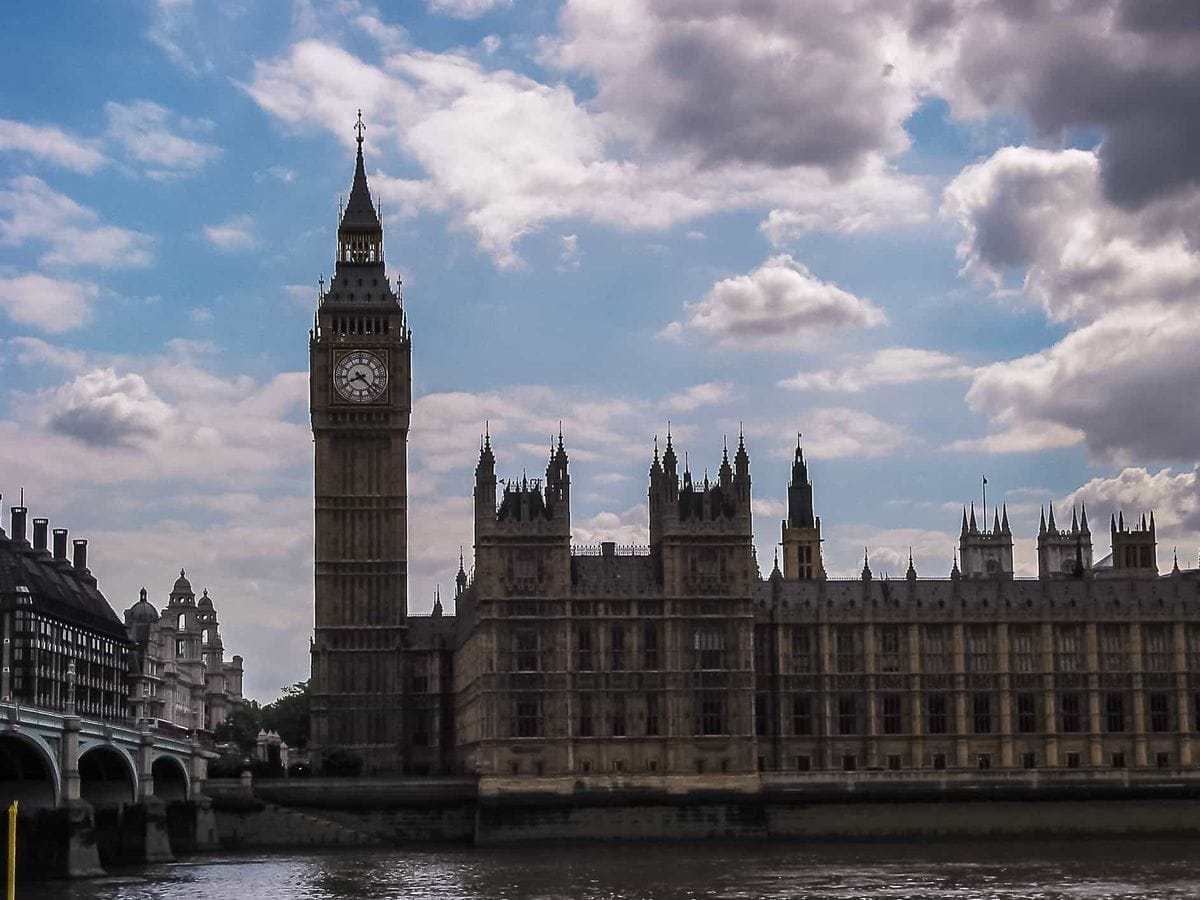European Fashion Do’s and Don’ts
European fashion is as diverse as the continent itself, with each country boasting its own unique style and set of etiquette rules. From the chic streets of Paris to the minimalist vibes of Scandinavia, understanding the do’s and don’ts of European fashion can help you navigate different settings with ease and confidence.
This article delves into the intricacies of European fashion etiquette, explores the evolution of style across the continent, provides country-specific insights, and highlights the growing importance of sustainable and ethical fashion choices.
Key Takeaways
- European fashion etiquette varies greatly, with specific dress codes for professional settings and a respect for regional dress traditions.
- The evolution of European style is influenced by historical events, with denim being a timeless staple and social media now playing a significant role in shaping trends.
- Distinct fashion characteristics can be observed in different European countries, such as French elegance, Italian bold accessorizing, and Scandinavian simplicity.
- Sustainability and ethical considerations are increasingly important in European fashion, with a focus on eco-friendly practices, conscious consumerism, and circular fashion.
- Understanding the spectrum of casual to formal attire and adapting to seasonal and event-specific dress codes is crucial for appropriate dressing in Europe.
Understanding European Fashion Etiquette

Workplace Attire: Navigating Professional Dress Codes
Understanding the nuances of workplace attire in Europe is essential for maintaining professionalism and making a positive impression. Researching the company’s culture and dress code policies before an interview or starting a new job is crucial. It’s advisable to start conservatively; being slightly overdressed on your first day allows you to adjust your attire based on your colleagues’ styles.
When in doubt, it’s better to overdress for important meetings or events. A smart accessory choice can significantly enhance a business casual outfit.
Dress codes can vary significantly across different industries and even within companies. For instance, the tech industry may lean towards more casual wear, while finance and law often require more formal attire. Here’s a quick guide to help you navigate:
- Research the Company: Understand the culture and dress code.
- Start Conservative: Opt for more formal attire initially.
- When in Doubt, Overdress: Better to be formal for key events.
- Accessorize Smartly: Elevate your look with the right accessories.
Remember that a well-drafted dress code that is applied consistently is usually within legal boundaries, as long as it does not favor one gender over another. Paying attention to how your colleagues dress and the overall office environment will provide valuable clues about what is considered appropriate attire.
Cultural Sensitivity: Respecting Regional Dress Traditions

When traveling or living in Europe, it’s crucial to be aware of the cultural values and norms that influence dress codes. These can vary significantly from one region to another, reflecting the diverse tapestry of European societies. For instance, while some areas may have a relaxed approach to attire, others may adhere to more traditional or conservative standards.
- In New Guinea and Vanuatu, men’s traditional wear might include just a penis sheath in public settings.
- In parts of Bali, it’s not uncommon for women to go topless, a practice less prevalent in Western countries.
It’s essential to recognize that what is considered casual or everyday clothing in one culture can be seen as formal or ceremonial in another. This sensitivity to local customs is not just a matter of respect but also helps in fostering positive interactions.
Understanding and respecting local dress traditions is not only about avoiding offense; it’s about embracing the cultural richness that each European region has to offer. Whether it’s the intricate patterns of Eastern European folk costumes or the strict formalities of Western dress codes, each has its place and significance. It’s advisable to research and observe local customs, especially during significant events or in formal settings.
Fashion Faux Pas: Avoiding Common Mistakes
When it comes to dressing in Europe, avoiding fashion faux pas is just as important as embracing local style. Understanding the subtleties of European fashion can save you from embarrassing mistakes and help you blend in with the locals. For instance, overly casual American staples like ball caps and Converse might stand out in a crowd of Europeans known for their more polished casual wear.
- Denim Dos and Don’ts:
- Do find the perfect fit; jeans that are too tight or too loose can look unflattering.
- Don’t wear distressed denim to professional settings; it’s often seen as too informal.
Remember, fashion is not just about following trends, but also about feeling confident and comfortable in your choices.
While each country may have its own specific fashion rules, there are some universal mistakes to avoid. For example, wearing jeans that are either too big or too small is a common error. Jeans that sag can appear frumpy, while those that are too tight can create unwanted bulges. Paying attention to these details can make a significant difference in your overall appearance.
The Evolution of European Style
Historical Influences on Modern Fashion

The tapestry of modern European fashion is rich with threads from the past. The evolution of style is deeply rooted in history, with each era contributing unique elements that resonate in today’s trends. From the opulent gowns of the Renaissance to the sharp tailoring of the 19th century, historical garments have inspired contemporary designers to reinterpret classic aesthetics for the modern wardrobe.
European fashion has always been a melting pot of influences, with each country bringing its own distinct flavor to the table. For instance, the French fashion’s penchant for elegance and sophistication can be traced back to the court of Louis XIV, while Italian fashion’s boldness has its origins in the flamboyant attire of the Renaissance nobility.
The understanding of historical context is crucial for appreciating the subtleties of European style. It’s not just about replicating the past, but about weaving historical elements into the fabric of modern design to create something both timeless and timely.
To grasp the extent of historical influence, consider the following list of fashion elements that have stood the test of time:
- Corsetry and structured bodices
- Tailored suits and coats
- Lace and embroidery details
- Use of luxurious fabrics like silk and velvet
These enduring elements are testament to the lasting impact of historical fashion, and they continue to shape the way we dress today.
Denim Through the Decades: A Staple of European Wardrobes
Denim has been a staple of European fashion for centuries, evolving from workwear to a symbol of style and individuality. The fabric’s journey is marked by its versatility and enduring popularity.
In the 16th century, denim was widely used throughout Europe, with the English adopting the “Serge de Nimes” by the 17th century. This robust fabric has since become synonymous with durability and comfort. As we trace the history of denim, we see its transformation from a utilitarian material to a fashion statement.
- 16th Century: Widespread use of denim in Europe
- 17th Century: English adoption of “Serge de Nimes”
- Modern Era: Denim as a fashion icon
Denim’s adaptability has allowed it to remain fashionable through changing times, with each decade adding its own twist to the classic material.
Today, brands like Levi’s and Acne have become household names, each offering their unique take on denim. The key to denim’s longevity lies in its ability to reinvent itself while maintaining its core characteristics of strength and simplicity.
Influencer Impact: How Social Media Shapes Trends
In the realm of fashion, social media influencers have become pivotal in shaping what’s en vogue. Platforms like Instagram and YouTube serve as stages where style is both showcased and created, with influencers often being the first to adopt new trends. Their reach extends globally, allowing local styles to gain international attention swiftly.
The influence of social media on fashion is undeniable. It has transformed the way trends are disseminated, making them more accessible to a wider audience. The table below illustrates some key social media platforms and their impact on fashion trends:
| Platform | Influence on Fashion Trends |
|---|---|
| High – Visual, widespread reach | |
| YouTube | Medium – Video content, tutorials |
| Low – Community discussions, sharing |
The Role Of Social Media In Influencing Fashion Trends: Social media has enabled fashion enthusiasts to share their style and fashion choices with a broader audience, making it easier for trends to spread quickly.
As trends permeate through social media, they often reflect the cultural zeitgeist, capturing the essence of the moment. Influencers not only introduce new styles but also revive bygone trends, giving them a modern twist. This cyclical nature of fashion is accelerated by the digital age, where a trend can resurface and become mainstream in a fraction of the time it once took.
Country-Specific Fashion Insights

French Elegance: Defining Chic
Renowned for their unparalleled sense of style, the French have long been synonymous with fashion excellence. The essence of French chic lies in the art of looking both sophisticated and effortless. A journey through elegance reveals that the key is in the details; it’s about choosing quality over quantity, and embracing a timeless aesthetic that transcends trends.
The French approach to fashion is less about what you wear and more about how you wear it. It’s the confidence in pairing a simple charcoal gray suit with a vivid blue dress shirt, or the audacity to accessorize with brown double monk strap shoes that elevates an outfit from ordinary to extraordinary.
For those looking to infuse their wardrobe with a touch of French elegance, consider these points:
- Invest in classic pieces that will stand the test of time.
- Don’t shy away from bold choices; a well-placed embellishment can make an outfit.
- Remember that repetition is not a faux pas; wearing the same standout gown to multiple black-tie events is a mark of chic sustainability.
Italian Flair: Boldness in Accessorizing
In the heart of Italy’s fashion scene, accessorizing is not just an afterthought—it’s a statement of individuality and boldness. Italian accessories are characterized by their vibrant colors, intricate designs, and the ability to transform an outfit from ordinary to extraordinary. Whether it’s a pair of leather gloves in Florence or a silk scarf from Milan, each piece tells a story of craftsmanship and style.
Embrace the Italian approach to accessories by choosing pieces that reflect your personality and add a touch of glamour to your ensemble. Remember, it’s not about the quantity of accessories, but the impact of each carefully selected item.
Italian accessorizing is as much about the choice of items as it is about how they are paired. Here’s a quick guide to matching accessories with your attire:
- Waistcoat: No for business casual, Yes for more formal settings
- Necktie: Optional in non-traditional fabrics for business casual, stick to conservative options for formal
- Tie Bar: Skip for business casual, a must for formal occasions
- Pocket Square: Playful designs for a casual look, refined patterns for formality
- Cufflinks: Not necessary for casual, Yes for a polished formal look
- Socks: Choose brighter colors for a fun twist in casual settings, subdued tones for formal
- Belt: Go for a contrasting belt to add flair, match with shoes for a cohesive look
- Scarf: Opt for patterned or bright colors to stand out, neutral tones for subtlety
From Fendi’s iconic baguettes to Prada’s structured top-handles, Italians know how to make a statement with their accessories. The key is to wear them with confidence and allow your accessories to elevate your entire look.
Scandinavian Minimalism: The Art of Simplicity
Scandinavian fashion embodies the principle of less is more, focusing on clean lines, neutral palettes, and functional design. The essence of Scandinavian minimalism lies in the art of stripping down to the essentials, creating timeless pieces that transcend seasonal trends.
In the realm of Scandinavian style, the emphasis is on quality over quantity. A minimalist wardrobe consists of versatile, well-made staples that can be effortlessly mixed and matched. Below is a list of key items that form the foundation of a minimalist wardrobe:
- Heavyweight T-Shirts: Durable and refined, perfect for layering.
- Cloud Low Loose Jeans: Comfort meets style in a relaxed fit.
- The Trench Coat: A classic piece for transitional weather.
- Charcoal Gray Suit: Ideal for both formal and casual settings.
- Brown Monk Strap Shoes: A touch of modern elegance.
Embracing minimalism doesn’t mean sacrificing personality. Accessories and subtle details can add character to an outfit while maintaining a clean aesthetic.
The Scandinavian approach to fashion is not just about the clothes; it’s a lifestyle choice that values sustainability and mindfulness. It’s about making conscious decisions to invest in garments that will last and choosing simplicity over excess.
Sustainable and Ethical Fashion Choices

Eco-Friendly Fabrics and Practices
In the pursuit of sustainability, choosing the right fabrics is crucial for reducing fashion’s environmental footprint. Eco-friendly materials like organic cotton, bamboo, and hemp are becoming increasingly popular for their lower impact on the planet. However, one standout fabric is linen, known for its minimal water usage and biodegradability.
Linen’s durability and breathability make it a favorite for conscious consumers. It’s a versatile material that can be dressed up or down, making it a sustainable choice for Europe and beyond. Embrace sustainable fashion with linen and its eco-friendly benefits.
When considering eco-friendly practices, it’s not just about the materials. It’s also about how we care for our clothes. Washing less frequently, air-drying, and choosing environmentally friendly detergents can significantly extend the life of garments and reduce their ecological impact.
Here’s a quick look at some popular eco-friendly fabrics and their attributes:
- Organic Cotton: Grown without pesticides, less water-intensive.
- Bamboo: Rapidly renewable, soft, and anti-bacterial.
- Hemp: Strong, uses little water, improves soil health.
- Linen: Requires minimal pesticides and water, highly biodegradable.
The Anti-Sweatshop Movement: Choosing Consciously
The anti-sweatshop movement has gained significant momentum as consumers become more aware of the ethical implications of their fashion choices. Choosing consciously means supporting brands that prioritize fair labor practices and humane working conditions. This shift towards ethical consumerism is not just a trend but a powerful statement against the exploitation prevalent in the fashion industry.
Making ethical fashion choices often involves researching brands to ensure they align with humane and sustainable practices. It’s about taking a stand to protect workers’ rights and dignity.
Here are some steps to consider when aiming to support the anti-sweatshop movement:
- Look for certifications and labels that indicate fair trade and ethical sourcing.
- Research the brand’s labor practices and transparency in their supply chain.
- Support small businesses and local artisans who are more likely to engage in ethical practices.
- Be willing to invest in quality over quantity, choosing well-made pieces that last longer.
- Advocate for change by voicing concerns and encouraging others to make conscious choices.
Circular Fashion: Embracing Second-Hand and Upcycling
Circular fashion is not just a trend; it’s a commitment to a sustainable lifestyle. By choosing to buy second-hand, we reduce the demand for new production and the strain on our planet’s resources. However, it’s crucial to recognize that overconsumption within second-hand fashion is not sustainable. Embracing a circular fashion mindset by repairing, upcycling, or swapping clothes with others can also extend the life cycle of garments and keep them out of landfills.
Circular fashion champions creativity and innovation, encouraging individuals to see the potential in pre-loved items. Transforming an old garment into something new not only gives it a second life but also reflects a personal touch that is often missing in mass-produced clothing.
Here are some practical ways to engage in circular fashion:
- Shop for vintage or pre-owned pieces with timeless appeal.
- Attend clothes swapping events or organize one with friends.
- Learn basic sewing skills to repair and alter your clothes.
- Explore upcycling techniques to reinvent your wardrobe.
Remember, the goal is to create a wardrobe that is both ethical and stylish, without contributing to the cycle of waste.
Dressing for the Occasion

Casual vs. Formal: Understanding the Spectrum
In the diverse landscape of European fashion, understanding the distinction between casual and formal attire is crucial. Business casual and business formal represent two distinct categories, each with its own set of expectations. Business formal typically requires a suit and is expected in traditional corporate environments and high-stakes meetings. On the other hand, business casual offers more flexibility, allowing for a mix of dress shirts, slacks, and optional ties.
When navigating between casual and formal, consider the context of the event and the cultural norms of the country you’re in. It’s often better to be slightly overdressed than underdressed, as you can easily adjust a formal outfit to be more casual if needed.
For those occasions that fall in the middle, such as semi-formal or dressy casual events, a neat button-down shirt with tailored trousers and an optional blazer strikes the right balance. Casual attire, however, grants the most freedom, embracing stylish combinations like a blazer with jeans. Remember, the key to European fashion is not just in the clothing but in the confidence and appropriateness with which it is worn.
Seasonal Wardrobe Shifts: Adapting to European Climates
Adapting your wardrobe to the diverse European climates is essential for both comfort and style. Spring and summer in Europe call for lighter fabrics and colors. Opt for breathable materials like cotton or linen, and embrace pastel shades to reflect the season’s vibrancy. Footwear such as loafers or boat shoes can complement your outfit while keeping you cool.
As the seasons shift to fall and winter, layering becomes crucial. Incorporate cardigans, vests, or blazers to stay warm without sacrificing style. Choose colors that resonate with the season’s mood, such as burgundy, forest green, or deep blue. For footwear, boots or leather shoes are both practical and fashionable choices.
Remember, the key to mastering European style is to ensure your clothes fit well. European city-dwellers tend to wear well-fitting clothes, so it doesn’t hurt to follow their lead. Even something as simple as jeans and a t-shirt or button-up can look exceptionally stylish when tailored correctly.
While keeping up with trends can be refreshing, don’t stress over being fashion-forward. Wear what feels fresh and new to you, and build a wardrobe that makes you happy. Whether you arrange your wardrobe by season or by degree of formality, having versatile pieces that can be mixed and matched will serve you well throughout the year.
Event-Specific Attire: What to Wear and When
Navigating event-specific attire can be daunting, but with a few key insights, you can confidently dress for any occasion. Assess the event’s location and surface to ensure your footwear is both stylish and practical. For instance, stilettos might not be the best choice for a garden party.
When attending black-tie events, remember that it’s acceptable to repeat outfits. Being chic isn’t just about a new dress; it’s about responsible fashion choices.
Before the event, reach out to your social circle to discuss the dress code. This not only helps avoid outfit duplication but also reinforces your personal style. Here’s a quick guide to help you prepare:
- Black-tie: Opt for elegance; gowns for women, tuxedos for men.
- Evening: A cocktail dress or a tailored suit can be perfect.
- Beach formal: Think breezy fabrics and comfortable shoes.
- Hipster formal: Show your unique style with vintage or unconventional pieces.
- California cocktail: Casual yet polished, with a touch of glamour.
Remember, the key to mastering event-specific attire is to balance personal style with the event’s dress code. Always aim for a look that feels true to you while respecting the occasion’s expectations.
Conclusion
Navigating the diverse landscape of European fashion can be both exciting and challenging. From the timeless appeal of denim to the nuances of business casual attire, understanding the do’s and don’ts is key to avoiding a wardrobe faux pas. While European dress codes may seem less stringent today, it’s important to remain mindful of cultural sensitivities and legal considerations, such as workplace clothing bans. Whether you’re inspired by the relaxed styles of European influencers or the historical significance of garments, fashion is ultimately about expressing your individuality and feeling confident in your choices. As trends evolve and new styles emerge, keep an open mind and don’t be afraid to experiment, but always remember to wear what feels authentic to you.
Frequently Asked Questions
What are the key considerations for workplace attire in Europe?
European workplace attire varies by country and company culture, but generally, it is important to dress professionally and adhere to specific dress codes if they exist. Notably, certain clothing items may be banned in the workplace, such as the European Court of Justice’s ruling on Islamic headscarves.
How does cultural sensitivity play a role in European fashion?
Being culturally sensitive means respecting regional dress traditions and understanding the historical context of certain garments. It’s important to be aware of and sensitive to local customs and dress codes, especially when traveling or conducting business in different European countries.
Can you give an example of a common fashion faux pas in Europe?
A common fashion faux pas in Europe is dressing too casually for formal events or not respecting the dress code of a particular setting. It’s essential to know when to dress up and when a more relaxed style is appropriate.
How has social media influenced European fashion trends?
Social media, particularly influencer culture, has significantly shaped European fashion trends. Influencers often adopt and popularize new styles and relaxed fashion norms earlier in Europe compared to other regions, setting trends that spread globally.
What is the anti-sweatshop movement in European fashion?
The anti-sweatshop movement in Europe advocates for ethical labor practices and opposes the exploitation of workers in the fashion industry. It encourages consumers to choose brands that are transparent about their manufacturing processes and that support fair working conditions.
What should I consider when choosing an outfit for a specific event in Europe?
When selecting an outfit for an event in Europe, consider the formality of the occasion, the season, and the cultural context. It’s important to strike the right balance between casual and formal attire and to dress appropriately for the weather and local customs.

































